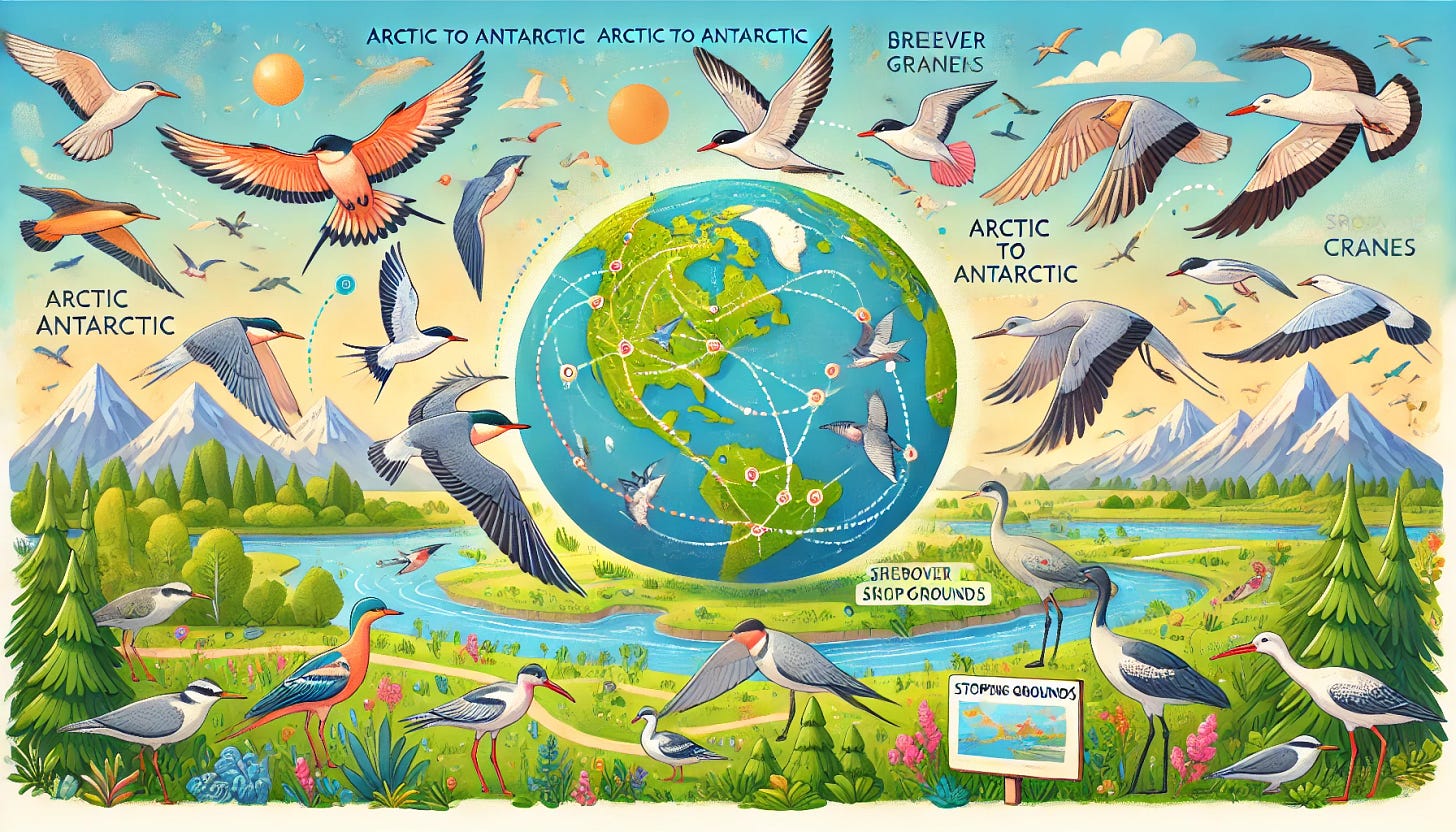The Amazing World of Bird Migration
Nature's Great Journey
Every year, billions of birds embark on awe-inspiring journeys across continents and oceans. Bird migration, the seasonal movement of birds from one region to another, is one of nature's most extraordinary phenomena. It showcases endurance, navigation skills, and an unyielding will to survive. In this post, we’ll delve into the reasons behind bird migration, the challenges they face, and the marvels of their navigation abilities.
Why Do Birds Migrate?
Birds migrate primarily to meet their basic needs: food, breeding, and favorable climates. Seasonal changes often deplete resources in certain regions, making migration necessary for survival. For instance:
Food Scarcity: As winter sets in, insects, seeds, and plants become scarce in colder regions, prompting birds to travel to warmer areas.
Breeding Opportunities: Migrating to specific breeding grounds ensures access to safe environments and abundant food for raising chicks.
Climate Adaptation: Some birds, like swallows, escape harsh winters by heading to milder regions.
Types of Bird Migration
Bird migration varies widely depending on species and geography. Some birds migrate latitudinally, moving north-south between breeding and wintering grounds, as seen in Arctic Terns that travel up to 44,000 miles annually between the Arctic and Antarctic. Others migrate altitudinally, shifting between higher and lower altitudes, like the Himalayan Monal descending to lower elevations in winter. Some species, such as Crossbills, exhibit nomadic migration, moving irregularly in search of food rather than following fixed routes.
Record-Breaking Migrants
Arctic Tern: Holds the record for the longest migration, traveling up to 44,000 miles annually from the Arctic to the Antarctic.
Bar-tailed Godwit: Completes a non-stop flight of 7,000–8,000 miles from Alaska to New Zealand.
Common Swifts: Spend months in the air, even sleeping while flying, during their migratory journeys.
How Do Birds Navigate?
One of the most fascinating aspects of migration is how birds find their way across vast and often featureless landscapes. They rely on several mechanisms. Birds use celestial navigation by orienting themselves with the position of the sun, stars, and moon. Many species also possess an internal compass that detects the Earth’s magnetic field. Additionally, they recognize visual landmarks such as rivers, coastlines, and mountain ranges. Some species use olfactory cues, relying on their sense of smell to locate their destinations. Finally, birds’ internal clocks, governed by their circadian rhythms, help determine the best times to travel.
Challenges of Migration
Migration is a perilous journey fraught with challenges. Birds face immense energy demands, often doubling their body weight before migration to store enough fat for the journey. Weather hazards like strong winds, storms, and extreme temperatures can disrupt their routes, while predators pose constant threats during rest stops and flights. Habitat loss due to urbanization, deforestation, and wetland destruction reduces critical stopover sites for rest and refueling. Additionally, light pollution in cities disorients birds, leading to collisions with buildings. Despite these obstacles, migratory birds demonstrate incredible resilience in completing their journeys.
Conservation Efforts
Protecting migratory birds and their habitats is crucial for maintaining ecological balance. Conservation efforts include preserving stopover sites such as wetlands, forests, and grasslands that provide essential rest and refueling points for migratory birds. Reducing light pollution through initiatives like "Lights Out" programs encourages cities to dim lights during peak migration seasons, preventing disorientation and collisions. International treaties, such as the Migratory Bird Treaty Act (MBTA), aim to protect migratory species across borders. Finally, raising public awareness about the importance of migratory birds and their ecosystems fosters community support for conservation initiatives.
Conclusion
Bird migration is a testament to nature’s brilliance and resilience. These incredible journeys highlight the interconnectedness of ecosystems and the need for global efforts to protect them. As you marvel at the next flock of geese flying in a V-formation or watch swallows return in spring, remember the extraordinary story behind their journey. By supporting conservation initiatives, we can ensure these winged travelers continue their ancient migrations for generations to come.


